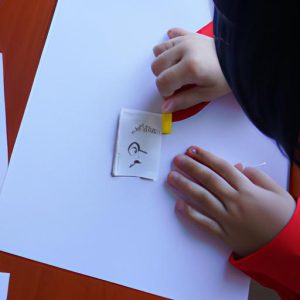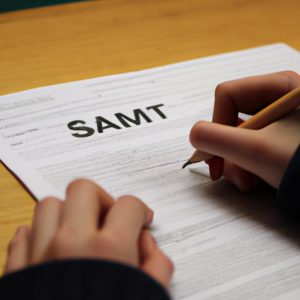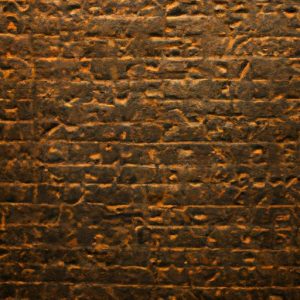Writing has long been revered as a powerful means of expression, but is it truly a form of art? In this article, we will delve into the depths of this question and explore the intricate relationship between writing and artistic expression. By examining the definition of writing as an art form, understanding its importance in our society, and highlighting the key points of this discussion, we will shed light on the artistic nature of writing.
Definition of writing as a form of art
Art is commonly defined as the expression or application of human creative skill and imagination, producing works that possess aesthetic or emotional value. Writing, when viewed through this lens, undeniably fits the description. Whether it’s poetry, prose, or even non-fiction, writing demands creativity, imagination, and a mastery of language to effectively convey thoughts, emotions, and ideas. Each word is carefully chosen, every sentence crafted with intention, creating a unique piece that resonates with its audience.
Importance of discussing the connection between writing and artistic expression
Understanding the connection between writing and artistic expression is vital for appreciating the nuances and depth of the written word. By acknowledging writing as an art form, we elevate its significance and encourage a deeper exploration of its potential. Furthermore, recognizing writing as art helps to break down the boundaries between traditional forms of art, fostering a more inclusive and holistic appreciation for creativity in all its manifestations.
Overview of the article’s main points
Throughout this article, we will explore various facets of writing as an art form. We will delve into the artistic elements embedded within writing, examining how creativity, imagination, and literary techniques contribute to its artistic value. Additionally, we will discuss how writing serves as a personal expression, allowing individuals to convey their unique perspectives and experiences. Furthermore, we will delve into the role of writing as a medium for social commentary, analyzing how writers challenge societal norms and inspire change through their work. Finally, we will explore the collaborative nature of writing, showcasing how it intertwines with other art forms to create a harmonious masterpiece.
Join me on this journey as we unravel the artistic essence of writing, appreciating its beauty and discovering the profound impact it holds. Together, let us embrace the power of words and celebrate writing as a true form of art.
Exploring the Artistic Elements of Writing
Writing: A Canvas for Creativity and Imagination
When we think of art, we often envision paintbrushes and canvases, but writing, too, is a medium that ignites the flames of creativity and imagination. As writers, we have the power to create entire worlds, breathe life into characters, and paint vivid landscapes with our words. We sculpt stories, poems, and essays that transport readers to realms beyond their wildest dreams. Through writing, we unleash our creative prowess, weaving intricate narratives that captivate and inspire.
The Brushstrokes of Literary Devices and Techniques
Just as artists employ various techniques to evoke emotions and convey their vision, writers utilize a diverse palette of literary devices and techniques to leave an indelible mark on their readers’ hearts and minds. Metaphors, similes, and personification infuse our words with vibrant imagery, allowing readers to see, hear, and feel the story unfolding before their eyes. Symbolism adds layers of depth and meaning, while foreshadowing keeps readers on the edge of their seats, eagerly anticipating what lies ahead. Writing, therefore, becomes a symphony of literary craftsmanship, each stroke of the pen deliberate and purposeful.
Unleashing the Emotional and Aesthetic Impact
Well-crafted writing possesses the uncanny ability to stir emotions within us, to make us laugh, cry, or experience a range of sensations. The power of a beautifully written piece lies in its capacity to transport us into the depths of human experience. It allows us to empathize with characters, to feel their joys, sorrows, and triumphs. Just as a painting can evoke awe or contemplation, writing, too, can elicit a profound emotional response. Moreover, the aesthetic impact of well-crafted writing lies in its ability to create a harmonious blend of words, rhythm, and structure, resulting in a symphony of literary delight.
Through exploring the artistic elements of writing, we come to realize that it is much more than a means of communication; it is a form of art that enables us to channel our creative energy, employ literary techniques, and evoke emotions within readers. Join me in the next section as we delve deeper into the personal expression that writing affords.
Writing as a Personal Expression
Expressing Thoughts, Feelings, and Experiences
Writing serves as a powerful medium for individuals to express their innermost thoughts, deepest emotions, and personal experiences. Whether through poetry, memoirs, or fictional narratives, writers have the ability to translate their subjective realities onto the page, inviting readers into their world. Through carefully chosen words and vivid descriptions, writers can evoke empathy, provoke introspection, and forge connections with their audience.
The Role of Personal Perspective and Voice
One of the most captivating aspects of writing as an art form is the unique perspective and voice each writer brings to their work. Every individual possesses a distinct set of experiences, values, and beliefs, which shape their writing style and contribute to their artistic expression. The personal perspective and voice of a writer infuse their work with authenticity, allowing readers to connect on a deeper level and experience the world through their eyes.
Conveying Artistic Vision through Style and Storytelling Techniques
Writers employ various stylistic techniques and storytelling methods to convey their artistic vision. From the choice of narrative structure to the use of metaphors, symbolism, and descriptive language, writers manipulate these elements to create a rich and immersive reading experience. Through their unique style, writers can evoke emotions, paint vivid imagery, and transport readers into different worlds. The ability to craft compelling characters, intricate plots, and profound themes showcases the mastery of storytelling as an art form.
In conclusion, writing serves as a personal expression, allowing individuals to share their thoughts, feelings, and experiences. Through their personal perspective and unique voice, writers infuse their work with authenticity and convey their artistic vision. By employing various stylistic techniques and storytelling methods, writers create literary masterpieces that resonate with readers on a profound level. Writing, indeed, stands as a powerful form of art, capable of capturing the essence of the human experience.
Writing as a Medium for Social Commentary
Writing has long been recognized as a powerful medium for social commentary, enabling individuals to critique and reflect upon the pressing issues of society. Through their words, writers have the ability to challenge norms, provoke thought, and inspire change in ways that can shape public opinion and influence society at large.
Highlighting how writing can be used to critique and reflect on societal issues
Writing serves as a platform for writers to shine a light on the flaws, injustices, and complexities of society. From novels that explore the human condition to op-eds that dissect current events, writing provides an avenue for critical analysis and reflection. By delving into societal issues, writers can bring attention to topics that may be overlooked or silenced, sparking conversations and encouraging readers to ponder the state of their world.
Analyzing the way writers use their work to challenge norms, provoke thought, and inspire change
Great writers possess the remarkable ability to challenge established norms through their work. They question the status quo, challenge societal expectations, and present alternative perspectives that push readers to reevaluate their beliefs. By challenging these norms, writers provoke thought and encourage readers to examine their own values, biases, and preconceptions. This introspection can lead to personal growth and, on a larger scale, inspire societal change.
Discussing the power of words in shaping public opinion and influencing society
The written word has immense power in shaping public opinion and influencing the collective consciousness of society. Writers have historically used their craft to ignite movements, spark revolutions, and bring about social change. Through their eloquence, writers can sway hearts and minds, rallying individuals to advocate for causes, challenge injustices, and fight for a better future. The impact of influential writers throughout history stands as a testament to the transformative power of words.
In conclusion, writing serves as a medium for social commentary, allowing writers to critique societal issues, challenge norms, and inspire change. By leveraging the power of their words, writers have the ability to shape public opinion, spark crucial conversations, and influence society in profound ways. As we continue to appreciate writing as an art form, let us also recognize its potential as a catalyst for social progress.
Writing as a Collaborative Art
Writing is often seen as a solitary endeavor, with writers secluded in their creative spaces. However, it is crucial to recognize that writing can also be a collaborative art form, where the fusion of minds and talents can elevate the artistic quality and impact of written works. Let us delve into the collaborative nature of writing, exploring the synergistic relationships between writers and other artists, and understanding the significance of collaboration in enhancing the artistic essence of written works.
Exploring the collaborative nature of writing through co-authorship, editing, and feedback
Collaboration in writing extends beyond mere solo efforts. Co-authorship is a prime example of how multiple writers come together to create a cohesive piece. By merging their distinct perspectives, ideas, and writing styles, co-authors can produce works that are richer in depth and complexity. This collaborative process allows for the exploration of diverse viewpoints, resulting in a more comprehensive narrative that resonates with a wider audience. Moreover, co-authors provide mutual support, constructive criticism, and a shared sense of accountability, enhancing the overall artistic quality of the work.
Editing and feedback are additional collaborative aspects that contribute to the refinement of written works. Writers often seek the expertise of editors who offer valuable insights, ensuring clarity, coherence, and consistency. Their critical eye helps polish the piece, elevating it to its full artistic potential. Feedback from peers, beta readers, or writing communities also plays a pivotal role. Constructive criticism and suggestions from others can inspire new ideas, offer fresh perspectives, and push writers beyond their creative boundaries.
Analyzing the synergy between writers and other artists, such as illustrators or musicians
Writing is not confined to words alone; it can seamlessly intertwine with other artistic forms to create a harmonious masterpiece. Collaboration between writers and illustrators, for instance, brings written narratives to life through vivid visuals. The marriage of words and images enhances the reader’s experience, evoking emotions and immersing them in the story. Similarly, collaboration between writers and musicians can result in powerful works where words are amplified by melodic compositions, creating a multisensory experience that transcends traditional boundaries.
The synergy between writers and other artists expands the artistic possibilities of written works, breathing new life into the narratives and captivating audiences in unique ways. Through these collaborations, the essence of writing intertwines with other art forms, creating a tapestry of creativity that resonates deeply with individuals.
Discussing the importance of collaboration in enhancing the artistic quality and impact of written works
Collaboration in writing is not merely a matter of convenience or efficiency; it is a catalyst for artistic growth and impact. By embracing collaboration, writers open themselves up to new perspectives, ideas, and techniques that can transform their work. The collective expertise and diverse backgrounds of collaborators infuse the written piece with fresh insights, pushing boundaries and challenging conventional norms. This collaborative approach ultimately leads to the creation of works that are more profound, thought-provoking, and resonant.
In conclusion, writing is not limited to the solitary act of putting pen to paper or fingers to keyboard. It is a collaborative art form that thrives on the fusion of minds and talents. Co-authorship, editing, feedback, and collaborations with other artists all contribute to the artistic quality and impact of written works. By embracing collaboration, writers unlock new dimensions of creativity, ensuring that their words transcend the boundaries of individuality and resonate deeply with audiences. Let us celebrate the collaborative nature of writing and the powerful artistic expressions it brings forth.
Conclusion
In conclusion, it is evident that writing is undeniably a form of art. Through the careful selection of words, the utilization of literary techniques, and the expression of personal perspectives, writers create captivating pieces that possess aesthetic and emotional value. By challenging societal norms, provoking thought, and inspiring change, writing also serves as a medium for social commentary, shaping public opinion and influencing society.
Furthermore, writing is not a solitary endeavor but a collaborative art. Writers often collaborate with other artists, such as illustrators or musicians, to enhance the artistic quality and impact of their work. This synergy between different art forms creates a harmonious masterpiece that transcends individual creativity.
As we embrace the artistic nature of writing, it is crucial to appreciate and explore its potential in our own lives. Whether we are writing poetry, crafting stories, or expressing our thoughts in a journal, we have the opportunity to tap into our creative instincts and leave a lasting impact on others. Writing allows us to find our unique voice and convey our artistic vision to the world.
In a world saturated with information and fast-paced communication, writing stands as a timeless form of art. It has the power to captivate, inspire, and evoke emotions. So, let us cherish and celebrate writing as the art form it truly is. As we continue to explore its artistic elements, embrace its personal expression, recognize its impact on society, and appreciate its collaborative nature, we open ourselves up to a world of creativity and imagination.
In this journey of words and artistic expression, may we find solace, inspiration, and a deeper understanding of ourselves and the world around us. Embrace writing as an art form, and let your words create masterpieces that resonate with others, leaving an indelible mark on the canvas of life.
Remember, writing is not merely a mechanical process of stringing words together, but an art form that allows you to paint pictures with words, evoke emotions, and create lasting connections. So, pick up your pen, embrace your creativity, and let your words flow like a masterpiece in motion.





